Last post I said I’d review schools of psychotherapy that promise to target addiction, and ACT and IFS were at the top of my list. I’ll get to these, but I thought I’d spread the net a bit wider. So I’m starting this series with a look at “psychodynamic” or psychoanalytic psychotherapy. I think the underlying concepts of this tradition are crucial for understanding and overcoming addiction.
Psychoanalysis (think Freud and his followers) is the mother of all psychotherapies. No matter what you’ve heard, no matter how much people scoff at penis envy and other outdated concepts, Freud was a 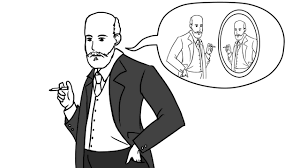 genius. He was the first (as far as I know) to develop a “talking cure” for serious emotional difficulties, and he was the first to bring the idea of unconscious wishes and motives into public parlance. Sure,
genius. He was the first (as far as I know) to develop a “talking cure” for serious emotional difficulties, and he was the first to bring the idea of unconscious wishes and motives into public parlance. Sure,  psychoanalysis — on the couch, four times a week, for fifteen years (?!) — hasn’t lived up to expectations, and I believe it’s correctly pushed aside by more focused, present-tense-oriented, and evidence-based treatment models.
psychoanalysis — on the couch, four times a week, for fifteen years (?!) — hasn’t lived up to expectations, and I believe it’s correctly pushed aside by more focused, present-tense-oriented, and evidence-based treatment models.
But its offspring, psychodynamic psychology, isn’t so easily ignored. So my goal for this post is to tell you how this approach tends to frame addiction and how it can help, directly or indirectly.
The person who first comes to mind (and to Google) when you put “psychoanalytic” and “addiction” in the same search is Lance Dodes. His 2015 book “The Sober Truth” purports to debunk 12-step methods as riding on bad science. I have mixed feelings about this book. If “Science” 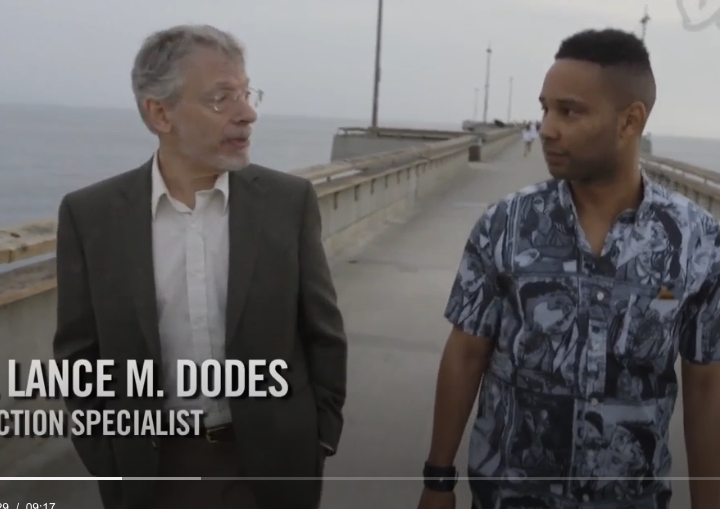 with a capital S is to be our lodestone, then psychoanalysis doesn’t look so hot either. But, okay, Dodes is inspiring, he’s developed his methods over decades, he’s come down strongly on “resort” rehabs (great video!) like those spawning in Malibu, California. So I want to touch on his perspective.
with a capital S is to be our lodestone, then psychoanalysis doesn’t look so hot either. But, okay, Dodes is inspiring, he’s developed his methods over decades, he’s come down strongly on “resort” rehabs (great video!) like those spawning in Malibu, California. So I want to touch on his perspective.
This is how Dodes conceptualizes addiction, and it captures core features of the psychodynamic insight:
“[E]very addictive act is preceded by a feeling of helplessness or powerlessness (an overwhelming of the capacity to manage [one’s moods or feelings] without feeling emotionally flooded). Addictive behavior functions to repair this underlying feeling of helplessness. It is able to do this because taking the addictive action (or even deciding to take this action) creates a sense of being empowered, of regaining control over one’s emotional experience and one’s life. This reversal of helplessness may be described as the psychological purpose of addiction.”
Of course we know that this temporary “empowerment” leads to further helplessness, but the initial rush of self-determination is not to be denied. More broadly, psychodynamic approaches always look at present 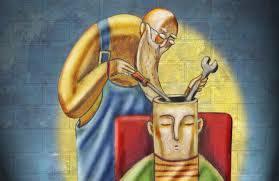 problems in the light of one’s early development. A realistic and increasingly popular spin-off of this position is the emphasis on childhood trauma, most famously highlighted by Gabor Maté, as featured in this clip. Whether a specific trauma is discovered or not, psychodynamic psychotherapy works to get people to rediscover and reinterpret their early struggles. The assumption is that addiction is an ineffective resolution to conflicts and defeats that were never fully accepted or resolved.
problems in the light of one’s early development. A realistic and increasingly popular spin-off of this position is the emphasis on childhood trauma, most famously highlighted by Gabor Maté, as featured in this clip. Whether a specific trauma is discovered or not, psychodynamic psychotherapy works to get people to rediscover and reinterpret their early struggles. The assumption is that addiction is an ineffective resolution to conflicts and defeats that were never fully accepted or resolved.
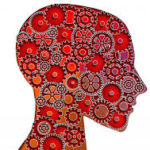 There are addiction treatment centres (e.g., Caron Treatment Centers) that expressly tap psychodynamic psychology in their approach. Other organizations combine aspects of psychodynamic psychology with other traditions. Andrew Tatarsky’s Center for Optimal Living in New York
There are addiction treatment centres (e.g., Caron Treatment Centers) that expressly tap psychodynamic psychology in their approach. Other organizations combine aspects of psychodynamic psychology with other traditions. Andrew Tatarsky’s Center for Optimal Living in New York  offers a harm-reduction approach that has psychodynamic psychology (and thus individual psychotherapy) built into it. I particularly like Tatarsky’s model (I spoke there and met him last June) because it is fundamentally empathic and humanistic, honouring individual differences and working with them.
offers a harm-reduction approach that has psychodynamic psychology (and thus individual psychotherapy) built into it. I particularly like Tatarsky’s model (I spoke there and met him last June) because it is fundamentally empathic and humanistic, honouring individual differences and working with them.
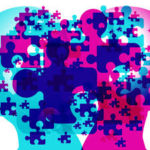 What’s most interesting to me is how psychodynamic ideas provide a foundation underlying many current schools of psychotherapy. With respect to addiction, ACT and IFS (my favourites — see last post) are all about bringing the past into the present and dealing with it. What seems to be missing from our lives? When did that start? Where does the depression come from? What messages do we repeatedly give ourselves that make us feel hopeless or despicable, so there seems little opportunity for relief except our addiction? Where do contradictory self-statements, like yes, this is what I want and I hate doing this! actually come from?
What’s most interesting to me is how psychodynamic ideas provide a foundation underlying many current schools of psychotherapy. With respect to addiction, ACT and IFS (my favourites — see last post) are all about bringing the past into the present and dealing with it. What seems to be missing from our lives? When did that start? Where does the depression come from? What messages do we repeatedly give ourselves that make us feel hopeless or despicable, so there seems little opportunity for relief except our addiction? Where do contradictory self-statements, like yes, this is what I want and I hate doing this! actually come from?
My own training in psychotherapy was entirely psychodynamic. I learned and practiced with children and adolescents, and my mentors were pretty classical by today’s standards. But what I do now, and what I think most  psychotherapists do, is blend different approaches, revising and refining our methods until we find what works best. And what works best appears at the interface of our own personality and knowledge base, our style of connecting with others, and the particular problems (in my case, mostly addiction) that come our way.
psychotherapists do, is blend different approaches, revising and refining our methods until we find what works best. And what works best appears at the interface of our own personality and knowledge base, our style of connecting with others, and the particular problems (in my case, mostly addiction) that come our way.
The problem with “pure” psychodynamic therapy is that it spends too long reinterpreting past events without connecting them intimately and acutely with current issues. As a result, pure psychodynamic therapy can take too long and never really get to the here-and-now. Yet the here-and-now mustn’t be put off when it comes to addiction. Addiction is self-perpetuating and it involves synaptic changes. Psychodynamic therapy ignores the fact that deep habits are neurally encoded and their momentum doesn’t derive from…any one thing. What’s more, people with addictions are truly miserable. They may live their lives on the cliff edge of self-destruction. So, for me, the psychodynamic approach works best as a platform on which to devise and enrich more direct interventions. Yes, we have to understand where we come from, but mostly as a means for understanding where we’re at now and where we’re going next.
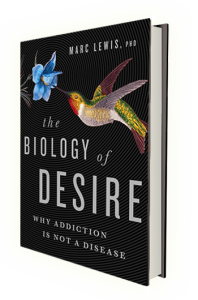 Informed by unparalleled neuroscientific insight and written with his usual flare, Marc Lewis’s The Biology of Desire effectively refutes the medical view of addiction as a brain disease. A bracing and informative corrective to the muddle that now characterizes public and professional discourse on this topic.” —Gabor Maté, M.D., author of In The Realm of Hungry Ghosts: Close Encounters With Addiction
Informed by unparalleled neuroscientific insight and written with his usual flare, Marc Lewis’s The Biology of Desire effectively refutes the medical view of addiction as a brain disease. A bracing and informative corrective to the muddle that now characterizes public and professional discourse on this topic.” —Gabor Maté, M.D., author of In The Realm of Hungry Ghosts: Close Encounters With Addiction
So, here’s an interesting question: How do these different therapeutic models stand up to this recent neuroscience finding that … we appear to only have Free Will … on the outbreath!? https://actu.epfl.ch/news/breathing-may-change-your-mind-about-free-will/
Odd when inhale activates the SNS and exhale the PNS. Decision already made on the exhale?
No. Decision already made on the inhale.
Polyvagal Theory suggests things may be a bit more granular than that …
https://www.bigshakti.com/how-to-use-relaxation-to-reduce-the-negative-effects-of-stress-handle-traumatic-events-prevent-overwhelm-and-feel-safe-and-secure/
Hi Mark
True..It’s more granular as regards the ventral layer of the modern vagus (and its associated feelings of safety and connectedness), but when my blood Ph goes askew and my C02 reflex gets activated, the forced reflexive inhalation is sympathetic.
Oh c’mon you guys, talk English!
Inhalation has a reflexive component; exhalation is more volitional. The research project Mark gave a link to in the first post shows an interesting link between the interaction of these pathways, respiration and decision making. Also, the clear connection many have made between breathing and mindfulness practices, cognitive enhancement, flexibility, etc.. It is possible some dots may get connected. Very cool!
Matt, this is very helpful. Thanks for pulling this discussion together this way. There’s an exercise — I don’t know where it comes from — to inhale quite rapidly and exhale gradually. If you do that for a minute or two, it’s supposed to relax you. And it does!
Maybe all these disorders, addiction, MDD, GAD, when they lock in and become autonomous closed systems, are dissociative states.
“The greatest sources of our suffering are the lies we tell ourselves.”
Elvin Semrad
“By ignoring unpleasant information we avoid drawing threatening conclusions. For example we could ignore federal statistics which indicate a higher risk of a heart attack because we think we have a particularly healthy lifestyle.”
Bojana Kuzmanovic et al: Influence of vmPFC on dmPFC predicts valence-guided
belief formation. Journal of Neuroscinece, 2018; 38 (37)
… what we see is not a direct reflection of the world but a mental representation of the world that is infused by our emotional experiences.
Siegal, EH et al in Psychological Science, 2018
“In fact, one could say the brain is hardwired to accept, reject, misremember or distort information based on whether it is viewed as accepting of or threatening to existing beliefs.”
American Psychological Assn: ScienceDaily, 10 August 2018.
Disruption between mind and body motivated by an attempt to avoid unpredictability and acute intense emotionality brought about by actual or perceived threat (GAD) or by actual or perceived loss or deprivation (MDD).
*Worry or rumination are invoked for control and predictability and, when momentarily successful in warding off aversive experiences of strong emotional responses, these self-evaluative processes are then reinforced.
Hiya Marc
Really sorry, it’s been way too long! I love your last two blogs and the conversations they have stimulated. My personal take, after many years of working in addiction/mental health, is that the model we choose to adopt is far less important than the therapeutic relationships we develop, nurture and, ultimately, end. Many years ago, whilst studying for a degree in nurse education, I was deep in the depths of heroin addiction and not in a place where much learning was going on. One of the tutors on the course, who was attuned to my struggles, took me to one side and said something to me that I’ve remembered to this day. He said, “if you don’t take anything else away from this course just remember that we can’t teach anybody anything. But we can create an environment, within which learning can occur.” For me that’s exactly what “therapy” is about, meeting people where they are and helping them build a safe space where they can begin to explore what’s happening for them, and hopefully develop some understanding. From this understanding maybe they we can help them find things like meaning and purpose. Sometimes we get it right and some learning does occur but maybe, more often than not, we’re in the business of planting seeds that, hopefully,” given the right conditions, will germinate and grow some time in the future.
Some of the things I see that may influence this process are; really good pro-social role modelling whilst maintaining an acute awareness of transference/counter-transference and transactional analysis; Looking after yourself to ensure that you are on top of your game; compassionate curiousity; honesty; authenticity; presence and unconditional love. Most of the people I work with inhabit a world devoid of any of these values and tend to engage with them much better than whatever psychotherapeutic model I bring to the table.
What an inspiring message, Peter. I think we’re in sync here. if you’re trying to teach or instruct a client, you require them to follow your lead and take the steps you deem appropriate. But when you offer them real understanding, empathy, and a bit of broad-based wisdom, you do indeed open up a space in which they’re free to move.
I also find that saying and showing that “I’ve been there,” and even that i continue to struggle with those parts of myself, knocks down the barriers between therapist and client. When I say to my clients “I know exactly how that feels,” I really mean it. And they know that I mean it. Those struggling with addiction assume they are being judged, whether overtly or covertly. To show them I really do not judge, No, really! — changes the playing field and promotes the likelihood of self-forgiveness.
Hi Marc,
Interesting focus for a series, reviewing the schools of psychotherapy that promise to target addiction. Like you, my training and practice has deep roots in psychoanalytic theory. The reason for this comment is to note the pivotal role of the therapist as a person and the psychology of the therapist in particular — no matter the school of psychotherapy. This is not to exalt the role of the therapist in some narcissistic-omnipotent sense but, on the contrary, to denote the fact that therapists of any school are limited in terms of effectiveness as agents of healing and transformation by their own history, consciousness and development. This is to emphasize the importance of ongoing development through life, not to say we are, necessarily, prisoners of our past.
I do not know if you are familiar with the work of David Wallin, Ph.D. but I participated in a conference he presented last year entitled Attachment in Psychotherapy and Relational Transformation and the Psychology of the Therapist. His work, to me, is brilliant and takes off where psychodynamic therapies leave off by implicitly integrating essential tenets of existential-humanistic psychotherapies such as freedom, conscious choice, responsibility, and human presence with psychoanalytic psychotherapy. Wallin’s insight and understanding of how the therapist’s own attachment patterns shape therapy, the concepts of collusion & collision and how they inevitably become obstacles in therapy, and how to transform these obstacles into opportunities for genuine, authentic collaboration are excellent. The best psychology – in terms of insight and usefulness – I have had the pleasure of learning about and studying in a long time.
“Twist and turn the matter as we may, the relation between doctor and patient remains a personal one in which the whole being of the doctor plays its part. The personalities of doctor and patient are infinitely more important to the outcome of treatment than what the doctor says and thinks.” C. J. Jung (1931)
“We are the tools of our trade.” Pearlman and Saakvitne (1995)
Hi Dawn. Your comment makes a perfect sequel to Peter’s comment, above. No, I don’t know Wallin’s work, but I have long felt that the “veil” pulled down between therapist and client, in classical psychoanalytic work, was little more than a convenience to keep the therapist safe. I feel very involved in the therapy I do. I sometimes get passionate, frustrated, I listen intently but I also sweat and strain, I sometimes feel a fusion between the client’s emotions and my own, and I don’t hide any of this. On the other hand, I don’t spend much time talking about myself or my own feelings.
in a nutshell, I do notice myself developing as a person and as a therapist through the grist of engaging with clients. I also notice my errors and miscalculations. If i’m not growing at least a little, then I know I’m not doing my best work.
Having just worked as an editor on the revised 6th edition of Irv Yalom’s “Theory and Practice of Group Psychotherapy”, I wonder if the particular helpfulness of ‘group’ psychotherapy is that it crosses psychodynamic psychotherapy with a ‘here-and-now’ orientation; it focuses not on past events but on ‘group process,’ in which group members reveal current patterns of relating, feeling and behaving in a ‘metaphorical ‘reality,’ and, ideally, realize that they are seen, accepted, supported (i’m talking ideal here), have impact on others, and may be able to change internal states through relational interactons. Just an amateur proposition. I myself have always felt allergic to group therapy because if I were paying money to bet better, I wanted to be the center of attention and felt sure that in a group, I wouldnt’ get it, and be irritated, awkward & uncomfortable. But maybe those feelings were exactly what I needed to explore. And perhaps, I got a ‘group’ experience in NA, which is part of why it worked for me. Do any of the people you cite–Dodes, Tatarsky, Mate–have any opinion of this? I don’t instantly think of them as being into ‘group therapy’, but… Yalom’s classic text was interesting and humane. It’s not about treating addiction, per se, but I know for myself that my need to ‘self-soothe’ with drugs very likely has roots in not having had the experience of being soothed through relationships as a child–by my well-meaning but emotionally illiterate, inarticulate and nondemonstrative parents– and also because worry and rumination, which I was drawn to, began to fail as a coping strategy, per Nicolas’s quote above.
Hi Lisa!!
Thanks so much for bringing up Yalom! A true existential humanist…and as close to buddhist type philosophical approaches as we get in western psychiatry. I’m just re-reading “The Schopenhauer Cure” one his novels that are psychiatric case studies in human frailty and transformation (among other things.) A lot of older-school therapists, social workers, drug counselors, mental health professionals, etc. use similar psychodynamic approaches to embrace a more all encompassing, “all pathways” approach…
Nice to hear you!
Hi Lisa, I think that Tatarsky’s work does embrace group processes — the others, probably not. Yes, one wants to be the centre of attention…but that tends to fade when you finally really sense that others’ issues are remarkably similar to your own, that you’re connected intimately in that way, and that you’re understood, not only by a therapist, but by a network of other affectionate and interested others — understood deeply by the group. That can have a lot of impact — a definite “first” for most of us.
PLEASE~!!!!!! Don’t leave out Penis Envy – very topical and current in my formative years.
Addiction is today’s problem- deal with it today’s terms until you have learned to manage it today and tomorrow… Only then look back and find and fix a source if you can find it.
Spend too much time back there and you may be dead first
We have far more direct and evidence-based ways to feel defective and worthless these days. I could write a book.
I agree with you about spending too much time on the past. Yet it seems crucial to at least make contact with that child-self…since it’s still very much present and in some ways hardly changed. I think that’s the biggest contribution the psychodynamic approach has made to other forms of therapy. But yes, somehow the pd mainstream lost the forest for the trees.
As usual we are not far apart in thinking. My point is first things first and the line between being aware of past events vs rumination is fuzzy .
Here is something I recently read which says it nicely
https://aeon.co/ideas/its-better-to-focus-on-where-you-are-going-than-how-you-are-feeling?utm_source=Aeon+Newsletter&utm_campaign=89f80ec0c0-EMAIL_CAMPAIGN_2020_02_10_12_07&utm_medium=email&utm_term=0_411a82e59d-89f80ec0c0-69459589
This article focuses on ACT, which I plan to get to soon. But the connections made in ACT stretch broadly between past, present, and future. I don’t know of any way of accepting who we are right now that doesn’t require some sort of insight and wisdom about where we’ve come from.
Freud quite liked Cocaine i believe. As for therapy, most of the men i work with on a day to day basis, indigenous Australian men, aren’t at all interested in psychoanalysis, or any of the fancy named ‘therapies’. They inherently know they are locked into a lifestyle dictated by their socio economic status and the baggage they have been handed by oppressors. There are theorists like Bruce Alexander and Johanna Hari who do not see this issue as predominately that of individual pathology rather an expression of societal structures and the disconnectedness many feel. But too i agree with Dodes – and here’s the rub – there’s a little bit of truth in them all; 12 step, Dodes, Hari, Alexander, Mate, Peele, Szalavitz – and in my work, sometimes, i use a little bit of a few types of ‘therapy’ but never do i read from the one textbook and as is so often the case with a therapist i use whatever comes to mind at any given moment and rarely do i think i am using one particular theory or type of practice – but at all times still i question myself – am i only contributing to them harm by focusing on whats wrong with my clients when the world keeps its head in the sand about the disadvantage fueling the feelings of helplessness which mostly affect those with few resources. I would love to know how things are looking therapy wise in those places where drug use is now legal; places where perhaps the attitudes towards drug users have also changed and maybe they are seen as just like the rest of us, who don’t run off to therapy every time we can’t cope with things because others consider us unwell of mind ….
Hi Terry. I emailed you with some of my reactions to your comment here. Basically, it’s awesome. You capture the tension, I think, between three distinct forces: (1) the wrongness of societal disenfranchisement and alienation that often works as an undercurrent to addiction, mainly by forging loneliness and helplessness (this seems to be most salient when dealing with oppressed minorities such as the people you work with; (2) the value of working with individuals, regardless…using your own unique mix of other people’s wisdom to connect directly with the person in front of you….thus breaking down the overstory, the forest, so to speak, in order to help the trees; and (3) the harm done by prohibition itself…viz the shame and hiding of one’s core needs that seem necessitated by conventional rules about what adults can and cannot do with their own consciousness. Thanks for this revealing synthesis.
I guess Marc its the synthesis of an adult lifetime of thinking about addiction, most notably within myself that leads to my views now which i must say have never settled on one thing but for such a long time did focus upon me, the individual, without realizing i am also but a product of our world. Illicit drug use polarizes, but it shouldn’t because we all use drugs. (I have taken your suggestion and purchased the Overstory) – another equally fascinating book i am reading at present is the ‘Brief history of drugs” by Antonio Escohotado which like Hari’s Chasing the Scream shows that what we deal with today in regards to drug laws is not the product of science but morality and how fickle human nature is in believing this or that. Nevertheless we can all do with self improvement along our life road and that’s the undercurrent here in regards to ‘treatment’, with drug use being an avenue to self enlightenment but real awareness only eventually coming with clarity of mind
Hey Marc,
I am a Certified Smart recovery Facilitator and just love CBT and use it in my life. When I react to a situation that may make me feel uncomfortable, Angry, Sad etc. It usually comes to the surface because I am overreacting and look back to where or what triggers this emotion to get to the bottom of it.
Many times it comes to the surface because I didn’t bring closure to it in the past Grieve, Forgive etc.
Today I know it’s ok to feel sad, lonely etc and I know there is a process that I need to go through in order to feel better, today and in the future. Ever reminding myself there is light at the end of the tunnel.
“Too Much” in the Title inspired me to write my 3rd book
http://www.lulu.com/shop/richard-henry/at-papas-where-too-much-is-not-always-good/paperback/product-23962455.html?fbclid=IwAR3SDkVRkIR4cQGrt1mGIKKK7NUjOOBEtPBweEhxJFG5ozZyNSpUT6EKwLs
Always a pleasure reading your posts, Marc
Respect Richard
Hi Richard. Great to hear from you…and you sound so…damn healthy! Knowing that it’s ok to feel sad and lonely is such a big deal. I mean, really knowing that it’s just temporary, just partial, an aspect of the landscape of being human. Congratulations on so much growth in the years we’ve been in touch!
Marc, Freud gets such a bad rap these days. You are correct in pointing out the importance he played in laying the general foundation for the psychotherapeutic model in all its current manifestations. He wrote a long book called the Cocaine Papers in which he describes his attempt to cure his friends morphine addiction using (injectable) cocaine. It didn’t work out. He had to abort the attempt after two weeks, but his personal description of the event is hilarious. I would have been dead in a week!
I don’t have much to add to your blog thesis. I agree that we have to go back enough to develop an understanding of our own personal development. When did we decide that we needed to merge with something to make it through life? What went wrong with the original attachment experience that we came out of it still requiring this merging? What is the story of my own unique pathology? How can I take that story and turn it into a plan to heal properly? These answers from the past are vital if we are to make changes in the present so that we can have a different future.
As usual, thanks for the post and the discussion, we need more of this type of exchange.
Hi Eric. Not much to say, just hello for now. I’m having some tech difficulties that I need to unravel.
I like what you say about needing to merge…what went wrong indeed? I think anxiety is the soul killer. Erikson said that if you don’t make it through the oceanic stage in one piece, you’re basically a goner. But I think many of us make it through just fine and then go backward (Do not pass Go, do not collect $200) when anxiety pounds too loudly at the gates of whatever stage we’re at.
I figured you’d agree with the importance of going back and getting a glimpse (at least) of where we’ve been. I think most of us on this blog take that as a premise.
Dear Marc,
The main issue with psychodynamic therapies is that they overlook the body and that’s where the impact of the trauma lies (well some really deep and archaic parts of the brain where procedural memories are engrained…)
That’s a good point, Matt. In the classic format, there is absolutely zero physical contact between therapist and client (or should I say “patient”?)
Addiction as an Attachment Disorder, Flores, Philip J.
This is just a test.